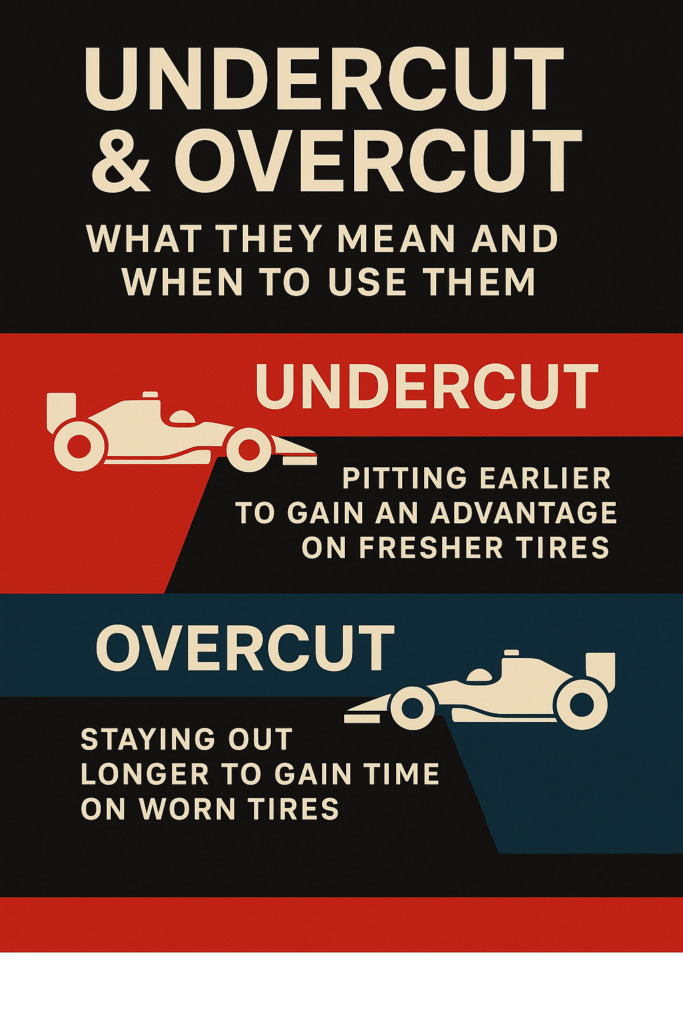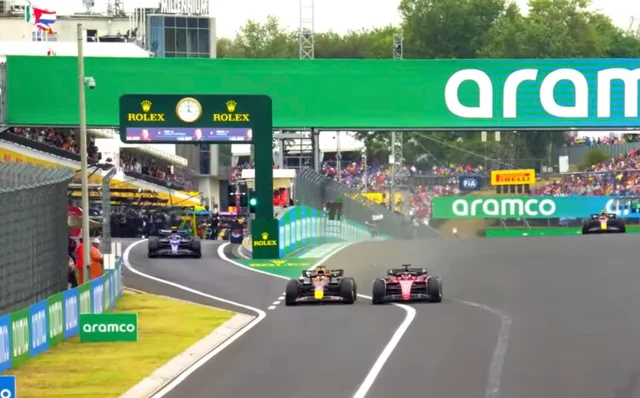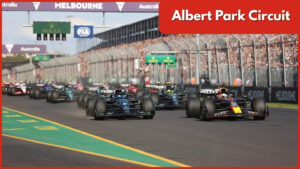In Formula 1, not everything is about being the fastest on track.
Some of the biggest turning points in a Grand Prix happen off the racing line: during pit stops. And two of the most decisive weapons teams use are called the undercut and the overcut.
If you’ve ever wondered why a car that was behind suddenly ends up in front after a pit stop, this article is for you.
What is an undercut?
The undercut is when a driver makes their pit stop before the car they are racing directly against.
The goal? To take advantage of fresh tires and use them to push flat-out, gaining time while the other driver is still on worn, slower rubber.
If it works, the undercutting driver “jumps” ahead of their rival when that rival finally pits a lap or two later.
It’s one of the most common tactics in modern F1, especially on circuits where overtaking is difficult.
Let’s break it down:
- Driver A and Driver B are battling for position.
- Driver A pits first, gets new tires, and rejoins the track.
- While Driver B stays out, Driver A pushes hard and sets faster lap times.
- When Driver B finally pits, they come out behind Driver A, even though they were ahead before the stop.
Real-world example:
At the 2021 French Grand Prix, Max Verstappen and Lewis Hamilton were locked in a tight battle.
Verstappen pitted first, while Hamilton stayed out. That gave Max several laps to build a gap on fresh tires, and when Lewis finally came in, the Red Bull was ahead.
The undercut was decisive and it helped Verstappen win the race.
What is an overcut?
The overcut is the opposite: a driver stays out longer than their rival, aiming to gain time by pushing hard on older tires, while the rival is either stuck in traffic or struggling with cold new tires.
It’s a higher-risk tactic that only works when a few things go just right:
- The driver has clean air (no traffic)
- Tire degradation is low
- The in-laps (the last laps before pitting) are still quick
- The team times it perfectly
If all of that aligns, the driver can pit after their opponent and still come out ahead.
Real-world example (that didn’t work):
At Monaco 2022, Ferrari tried to pull off an overcut with Charles Leclerc.
They left him out longer while Sergio Pérez pitted earlier. But Leclerc ended up getting stuck behind slower cars, and the timing didn’t work. Pérez jumped him and won the race.
Monaco is a circuit where overcuts can work because track position is everything… but timing is everything too.
How do teams decide which one to use?
There’s no magic formula, but the key factors are:
- Tire performance: Are the new tires fast enough to gain time?
- Track layout: Is overtaking hard? If yes, undercuts are more likely.
- Pit lane loss: How much time does a pit stop actually cost on that circuit?
- Traffic: Will the car rejoin in clean air or behind a slower car?
- Driver pace: Can the driver push enough to make it work?
Sometimes it’s not even a choice. You’re forced into one or the other based on what your rival does. F1 is full of mind games, and pit strategy is where they play out silently, but effectively.
The undercut and overcut might not look flashy on TV, but they are some of the most important moves a team can make. And when they get it right, it’s pure magic.
Next time you see a driver pit early or stay out longer, watch closely. You might be witnessing a silent overtake.



